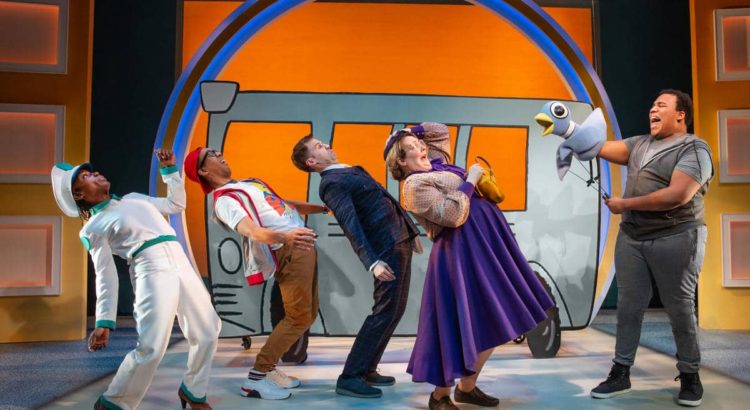Truth be told, across all societal provocations, nothing makes me want to take flight faster than a sniffly horde of fruit-juice-charged youth excitedly tugging at their weary caretakers’ outwear. Yet for the sake of reviewing Don’t Let the Pigeon Drive the Bus! (The Musical!) from the most irrelevant age bracket’s perspective, I was ready to face even the most high fructose children of Ann Arbor.
Family engagement is a major part of most forms of educational entertainment fed to American children, and this show was no exception. Prior to the show, the Michigan Theater compiled a fun guide to facilitate viewers’ interaction during the performance that included detachable finger puppets and a musical cues document. Also, before the puppets took the stage by storm, an enthusiastic man led the audience in a collective warm up dance that had entire families jumping up and down in anticipation for the pigeon-ness that was to follow.
 Mo Willems’ original children’s book series for Don’t Let the Pigeon Drive the Bus! has a minimalist aesthetic – most pages consist of one subject, most memorably the blue feathered protagonist, and a stylized speech bubble containing expressive text. However, director Jerry Whiddon and the show’s set designers went beyond Willems’ original minimalist aesthetic and transformed the stage into a colorful and flashy puppet world in which the sounds of a bus sputtering are personified into 30-second-long gibberish monologues. My favorite set elements were the two dynamic mini doors framing the main scene; actors would occasionally pop out of its segments to deliver funny additions to the musical number. Besides the wonderful gibberish bits and intense hot-dog eating noises, the performers shone with Jessica Hartman’s playful choreography with each musical number.
Mo Willems’ original children’s book series for Don’t Let the Pigeon Drive the Bus! has a minimalist aesthetic – most pages consist of one subject, most memorably the blue feathered protagonist, and a stylized speech bubble containing expressive text. However, director Jerry Whiddon and the show’s set designers went beyond Willems’ original minimalist aesthetic and transformed the stage into a colorful and flashy puppet world in which the sounds of a bus sputtering are personified into 30-second-long gibberish monologues. My favorite set elements were the two dynamic mini doors framing the main scene; actors would occasionally pop out of its segments to deliver funny additions to the musical number. Besides the wonderful gibberish bits and intense hot-dog eating noises, the performers shone with Jessica Hartman’s playful choreography with each musical number.
As far as the narrative goes, little bits and pieces of the performance triggered vague memories from my childhood experience with Willems’ works. In the original picture books, the Pigeon puts forth countless attempts to convince the reader to let them drive the bus. This component is often credited as a great introduction to teaching kids philosophical topics like the moral implications of giving into persuasion or viewing punishment and disappointment through new perspectives. In comparison, the musical adaptation seemed to capitalize on the concept of ‘finding oneself’, or one’s purpose, and the overall process of growing up – as told through the perspective of a wide-eyed periwinkle-colored pigeon. Indeed, Willems’ writing even suggested that the Pigeon was undergoing an existential crisis, which would shed light on much of the erratic behavior exhibited by the main puppet. The Pigeon’s bumpy journey from under-appreciated bird to important bus-driver’s assistant is reminiscent of many cartoonish underdog characters who discover their purpose within the universe’s workings near the story’s resolution, like Rudolph, Wilbur the pig, or James and his giant peach. Because it is a universally ideal human experience, especially for children and confused adolescents, this approach comes across as heartfelt and fulfilling in ending.





